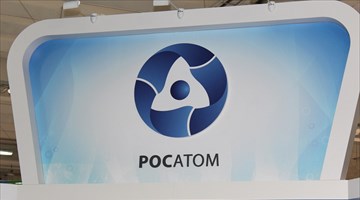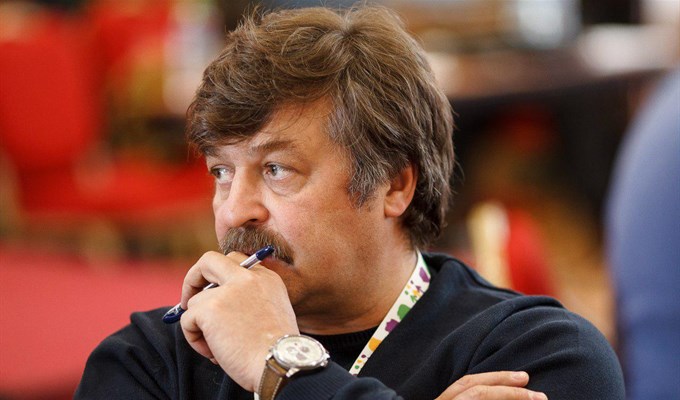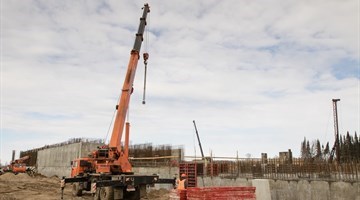TOMSK, May
19 – RIA Tomsk. The U-NOVUS forum – is one of the platforms where large companies are looking for perspective partners. Or employees. One of the participants of U-NOVUS–2017 is the director of Director of the Innovation Management Unit of Rosatom state corporation Vyacheslav Pershukov.
In Rosatom State Nuclear Energy Corporation he also supervises the project
"Proryv" to create nuclear energy technologies of new generation. One
of the key elements of the "Proryv" is the construction on the platform
of the Siberian Chemical Plant (SCP) in Seversk of the experimental
demonstration power complex (EDPC) with the BREST-300 reactor facility. In an
interview with RIA Tomsk Pershukov told about the implementation of the Tomsk
stage of the project.
Since 2011
Rosatom realizes at the SCP the project "Proryv" on creation the
newest fuel at which the nuclear power will work after 2020. In Seversk (the
closed satellite town of Tomsk) as a part of the experimental demonstration
power complex there will appear the BREST-OD-300 reactor facility with a
station nuclear fuel cycle, and also the production of uranium – plutonium
(nitride) fuel for fast neutrons reactors.
– At the
end of last year Rosatom announced the return of the "Proryv"
project, and, in particular, the project for the construction of the BREST-300
experimental and demonstration power complex at the R&D stage. Will be
postponed in this regard the time-frame of construction work on the platform in
Seversk?
© РИА Томск. Сергей Леваненков
– BREST-300
– is one of the elements of the large project called "Experimental
Demonstration Power Complex". And the main issue - is when we can
demonstrate the complete closure of the cycle. This is not only the launch of
the BREST-300 reactor itself, but a complex of problems related to reactor
operation, both with construction and fuel production, and experimental proof
that irradiated nuclear fuel can be re-launched into the production cycle
again.
This is the
huge scientific program, it's the real mega science, which takes time. It is
important that Tomsk, being acknowledged as scientific and educational center,
has an opportunity to implement such a mega science project for the benefit of
all mankind.
– At the
end of last year you said that construction works in Seversk will begin in late
2017 – early 2018. Are these terms still relevant?
– We plan
to start construction and installation works exactly in these terms. Today, I
see no objective reasons which could prevent us from starting our preparatory
work this year. And in Seversk it is known, volumes of construction work under
the BREST-300 platform are already prepared.
– Fast
neutron reactors, in particular BREST-300 - is fundamentally new stage in the
development of nuclear power. But in what actually the Seversk reactor will be
differ from another fast neutron reactor, which is being built at the Beloyarsk
NPP?
– In these
reactors heat carriers are fundamentally different. In one case, it's sodium,
in another - lead. And this entails great technological consequences. Both in
the design, in the capacities, and in the ways of further processing of this
heat carrier itself. So these reactors are unique in terms of the list of
technological problems that need to be overcome.
© предоставлено изданием "Страна Росатом"
Director of Director of the Innovation Management Unit of Rosatom state corporation Vyacheslav Pershukov
– Will the
work on R&D of the BREST-300 project lead to some serious technological
changes? Did the original project change a lot?
– We made
the basic decision on creation of the several stands, on which we will give
trial runs to the elements of technology. These are the stands for the main
circulation pump, steam generators and the reactor vessel from reinforced
concrete. What is important, their appearance will not affect the time-frame of
construction. The results of experiments on these stands will affect the
specifics of orders for the final equipment.
Construction
work will go on as usual. In this area, we are only looking for ways to reduce
costs. We understand what needs to be done, but we need to ensure that this
technology moved to commercial rails. Competition in the world energy market
forces us to move towards new technical solutions.
– New
technical and technological solutions require new, modern personnel –
specialists in such areas which yesterday did not exist (for example,
3D-printing). Will the training system change in the context of the appearance
of new, previously unknown professions?
© РИА Томск. Павел Стефанский
– I do not
see any need for this. We have a 10-year plan for training personnel for the
industry, there is a consortium of universities which train these experts. Why
should we fundamentally change the system which works? Another thing is that we
have a problem of staffing our projects abroad. There is a specificity, special
approach to the preparation of students, special teaching environment is
needed. There really is a staff shortage.
We launched
a large program for the Far Eastern cluster, which includes directions for
training of specialists we need. "Fashion" profession, like
3D-printing, – it's not education, but skill. What an engineer-mathematician
will do, whether he will be a specialist in 3D-printing or create mathematical models
for supercomputers or something else – it's just an area of activity that
requires skills, but not basic education.
– The world
energy market is changing before our eyes. Is Rosatom planning to seriously
expand the sphere of cooperation with innovative companies, university ones,
for example, who are ready to offer their own solutions in non-traditional
economic and technological spheres? Forum U-NOVUS forum is just about that ...
– To be
honest, what such specific industry like nuclear power, can expect from university
start-ups? They can not set tasks which would be interesting to us. They can
come with their developments. We need them to come with their competencies, and
we will set the tasks. Because those tasks which Rosatom can set for the
solution of specific problems of the industry, couldn't be set by anyone else.
This applies to traditional technologies.
But as for
the business diversification – we are now going to solar energy, wind power,
artificial intelligence, supercomputing, and the development of new energy
storage devices – here is the situation reversed. We are ready to consider
various ideas in these areas. We will create collaborations on the principles
by which Google or Facebook were created.
– In this
regard, will the innovative program of Rosatom, which you supervise, change?
– No, so
far we are acting within the framework of the already adopted program IDP-2.0
(Innovative Development Program – Ed.), which we defended and which is
recognized as the best in the country. But this program is about main field of
activity of the state corporation – energy current and future, elements of
supercomputer technologies, nuclear medicine and infrastructure. It does not
yet include elements on diversification of business of Rosatom, in the sphere of
solar or wind power generation. They are not approved yet.
As soon as
this happens, IDP 2.0 will be transformed into IDP 3.0. But now the government
is talking about the need for state corporations to transition from individual
development programs to intersectoral development programs. This will lead to
the synergy of competencies available for each individual corporation. I think
that for Rosatom it is a very promising topic.